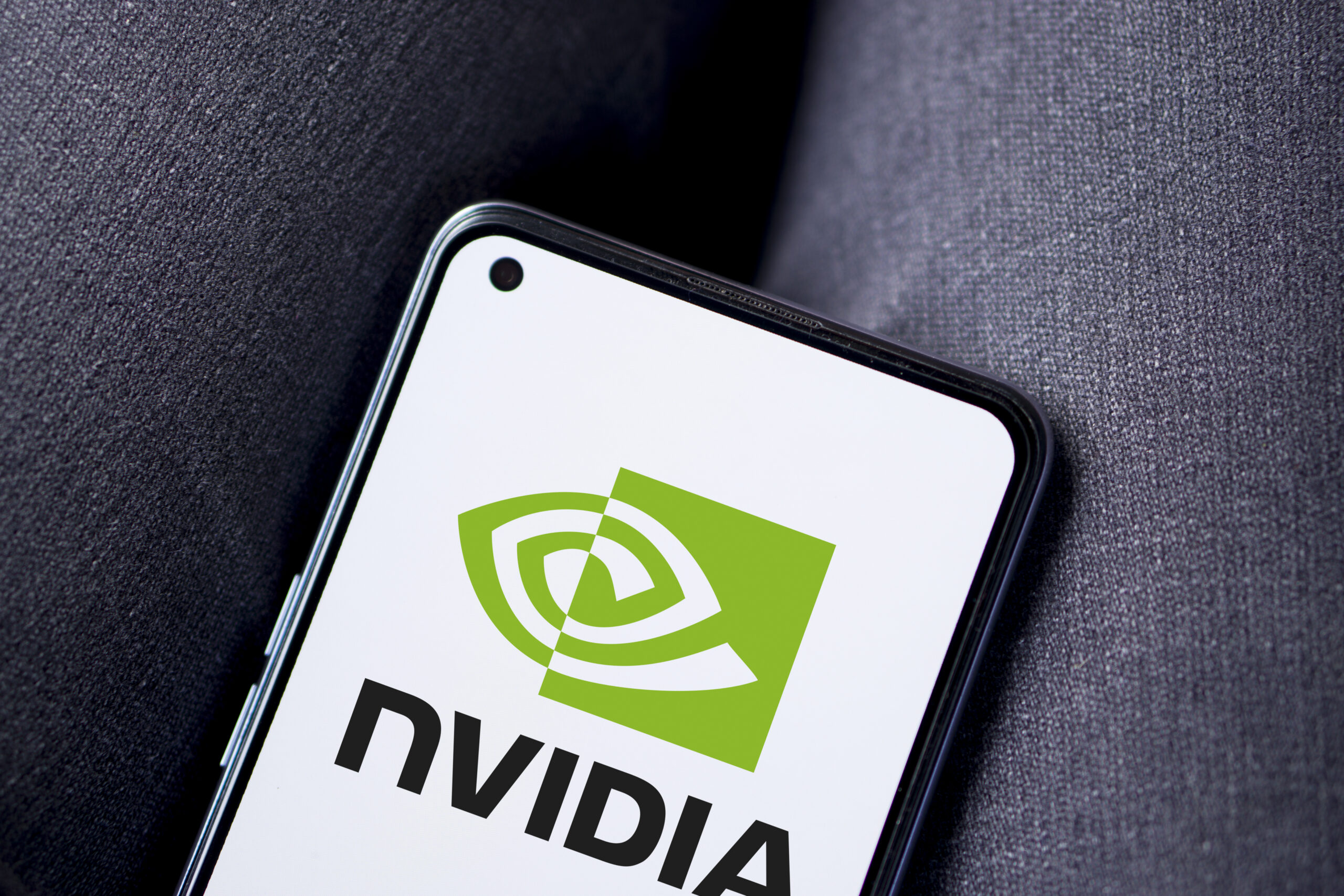As the GPU Technology Conference (GTC) in March 2025 approaches, excitement grows over Nvidia’s latest AI supercomputing breakthrough. NVIDIA unveils “Vera Rubin,” a next-generation AI chip architecture designed to push artificial intelligence to new limits. This innovation builds on the success of Blackwell Ultra GPUs, marking a major step toward artificial general intelligence (AGI). Notably, Vera Rubin features 288GB of HBM4E memory across eight stacks, demonstrating Nvidia’s dedication to high-performance computing. With these advancements, Nvidia continues shaping AI’s future while solidifying its role as a leader in technological innovation.
Unveiling Nvidia’s Vera Rubin: The Future of AI Supercomputing

Nvidia’s upcoming Vera Rubin architecture represents a quantum leap in AI supercomputing capabilities. Named after the pioneering American astronomer, this next-generation chip design promises to revolutionize the landscape of artificial intelligence and high-performance computing.
Unprecedented Memory Capacity
Vera Rubin’s groundbreaking design features extraordinary memory capabilities. It plans to use eight stacks of HBM4E memory, totaling 288 GB. This architecture sets a new standard for data processing and storage in AI systems. Moreover, the massive memory expansion allowsfor the handling of complex AI models and datasets. As a result, it pushes the boundaries of machine learning and deep neural networks.
Paving the Way to AGI
Vera Rubin is more than an incremental improvement; it marks a major step toward artificial general intelligence (AGI). Nvidia significantly increases memory capacity and computational power, creating a foundation for AI systems with human-like reasoning and adaptability. As a result, AI can perform across various domains more effectively. This breakthrough may open new frontiers in AI applications. For instance, it could enhance natural language processing and improve problem-solving in scientific research.
Looking Ahead: Rubin Ultra
The innovation doesn’t stop with Vera Rubin. Nvidia’s roadmap includes the Rubin Ultra, expected in 2027, which may further double memory capacity to an astounding 576 GB. This forward-thinking approach underscores Nvidia’s commitment to maintaining its leadership in the AI chip market and addressing the ever-growing demands of AI and high-performance computing applications.
Blackwell Ultra GPUs: Paving the Way for Vera Rubin’s Arrival
As Nvidia prepares to unveil its groundbreaking Vera Rubin architecture, it’s essential to understand the foundation laid by its predecessor, the Blackwell Ultra GPUs. These cutting-edge processors, set for release in late 2025, represent a significant leap forward in AI and high-performance computing capabilities.
Unprecedented Performance and Efficiency
The Blackwell Ultra GPUs boast remarkable improvements in performance and energy efficiency. With enhanced tensor cores and optimized memory subsystems, these GPUs deliver up to 2.5 times the performance of their predecessors while consuming 30% less power. This breakthrough enables more complex AI models and faster training times, pushing the boundaries of what’s possible in machine learning and scientific computing.
Advanced Memory Architecture
One of the most notable features of the Blackwell Ultra GPUs is their advanced memory architecture. Incorporating HBM3e memory, these GPUs offer unprecedented bandwidth and capacity, allowing for seamless processing of massive datasets and complex AI models. This memory upgrade plays a crucial role in preparing the ecosystem for Vera Rubin’s even more ambitious memory configurations.
Ecosystem Readiness
The release of Blackwell Ultra GPUs serves as a critical stepping stone for developers and data centers. By familiarizing itself with the advancements in Blackwell, the AI community can better prepare for the transition to Vera Rubin. This gradual evolution ensures a smooth adoption curve and maximizes the potential of Nvidia’s next-generation AI supercomputing architecture.
The Vera Rubin Architecture: Pushing the Boundaries of AGI
Unprecedented Memory Capacity
The Vera Rubin architecture marks a major advancement in AI chip design. Its innovative memory configuration sets new standards for artificial general intelligence. Notably, Nvidia integrates eight stacks of HBM4E memory, totaling 288 GB. This breakthrough tackles a key AI processing challenge: efficient data access and large-scale manipulation.
This exponential increase in on-chip memory enables complex models and larger datasets to be processed simultaneously. Consequently, AGI development potential significantly improves. Additionally, the architecture processes vast information in real time, unlocking new possibilities. As a result, machine learning algorithms better mimic human-like reasoning and adaptability.
Scalability and Future-Proofing
Looking ahead, Nvidia’s roadmap includes the Rubin Ultra, slated for 2027, which may double the memory capacity to a staggering 576 GB. This forward-thinking approach demonstrates Nvidia’s commitment to staying ahead of the curve in the rapidly evolving AI landscape.
The scalability of the Vera Rubin architecture ensures that as AI models grow in complexity and size, the hardware will be able to keep pace, providing researchers and developers with the tools they need to push the boundaries of what’s possible in artificial intelligence. This scalability is crucial for maintaining Nvidia’s leadership position in the face of growing competition and ever-increasing demands from the AI community.
Expanding Memory Capacity: Vera Rubin and Beyond
The Vera Rubin architecture represents a quantum leap in AI computing power, with its groundbreaking memory capacity at the forefront of this advancement. Nvidia’s latest innovation promises to push the boundaries of what’s possible in artificial intelligence and high-performance computing.
HBM4E: The Memory Powerhouse
At the heart of Vera Rubin’s impressive capabilities lies its incorporation of eight stacks of HBM4E memory. This configuration totals an astounding 288GB of high-bandwidth memory, providing AI models with unprecedented access to data. The increased memory capacity allows for more complex computations and larger datasets, potentially accelerating breakthroughs in fields such as natural language processing and computer vision.
Future-Proofing with Rubin Ultra
Looking ahead, Nvidia’s roadmap includes the Rubin Ultra, slated for 2027. This future iteration aims to double the memory capacity to a staggering 576 GB. To achieve this feat, Nvidia plans to leverage advanced packaging techniques, further solidifying its position at the cutting edge of AI hardware development.
Implications for AI Development
The expanded memory capacity of Vera Rubin and its successors has far-reaching implications for AI research and applications. With more on-chip memory, AI models can process larger datasets in real-time, potentially leading to more accurate predictions and deeper insights. This boost in capability could accelerate progress towards artificial general intelligence (AGI), bringing us closer to AI systems that can perform any intellectual task that a human can do.
Nvidia’s Strategic Vision: Staying Ahead in the AI Landscape
Pushing the Boundaries of AI Innovation
Nvidia’s unveiling of the Vera Rubin architecture represents a pivotal moment in the company’s relentless pursuit of AI supremacy. By incorporating cutting-edge technologies like the eight stacks of HBM4E memory, Nvidia is not just iterating on existing designs but reimagining the very foundation of AI computing. This bold move demonstrates the company’s commitment to pushing the boundaries of what’s possible in artificial intelligence and high-performance computing.
Addressing Market Dynamics and Competition
In an increasingly competitive landscape, Nvidia’s strategic focus on advanced AI chips is a clear signal of its intention to maintain market leadership. The Vera Rubin architecture, with its unprecedented memory capacity and processing power, is poised to address the growing demands of complex AI models and applications. By staying ahead of the curve, Nvidia is positioning itself to capitalize on the burgeoning AI market while fending off challenges from both established players and emerging contenders.
Setting the Stage for AGI
Perhaps most significantly, the Vera Rubin architecture represents a tangible step towards the holy grail of AI research: artificial general intelligence (AGI). By providing the computational horsepower necessary for increasingly sophisticated AI models, Nvidia is laying the groundwork for breakthroughs that could fundamentally reshape our understanding of machine intelligence. This forward-thinking approach not only cements Nvidia’s role as an industry leader but also positions the company at the forefront of the next great leap in AI technology.
Summing It Up
As you look ahead to the unveiling of Vera Rubin at GTC 2025, it’s clear that Nvidia is poised to redefine the boundaries of AI supercomputing. This groundbreaking architecture represents not just an incremental improvement but a paradigm shift in the pursuit of artificial general intelligence. With its unprecedented memory capacity and advanced packaging techniques, Vera Rubin stands as a testament to Nvidia’s unwavering commitment to innovation and market leadership. As the AI landscape continues to evolve at a breakneck pace, you can expect Nvidia to remain at the forefront, driving progress and shaping the future of high-performance computing. The implications of this technology are far-reaching, and its potential applications are bound only by the limits of human imagination.
More Stories
Japan’s Bold Bet: Rapidus Secures $5.4 Billion to Reclaim Semiconductor Supremacy
Rapidus Corp., a state-backed startup, leads this effort. It has embarked on an ambitious journey to revolutionize the chip industry. Test production is already underway, and partnerships with tech giants are on the horizon.
Meta’s Asia-Pacific Chief Steps Down After a Decade of Expansion
The driving force behind this expansion, Dan Neary, Meta’s Vice President for Asia-Pacific (APAC), is stepping down after a transformative decade.
DeepSeek’s Dual-Tech Breakthrough Rewrites the Rules of AI Reasoning
As you navigate the rapidly evolving landscape of artificial intelligence, prepare to witness a paradigm shift in AI reasoning capabilities....
Kindle’s AI Chronicles: Seamlessly Bridging Book Series with Smart Recaps
Imagine seamlessly transitioning between books in a series, effortlessly recalling crucial plot points and character arcs. Amazon's new AI-powered "Recaps"...
OpenAI Paints a Signature: Watermarking AI Images to Combat Misuse
As you navigate the rapidly evolving landscape of artificial intelligence, OpenAI's watermarking initiative demands your attention. The company is testing...
Oracle and Google Cloud Forge New Paths in Multicloud Collaboration
As cloud computing continues to evolve, a major partnership is redefining your multicloud strategy. Oracle and Google Cloud have joined...



Average Rating